… And call me a biscuit. My books are in Walmart. Not in the actual stores that I can see, but on the Walmart website.
Link here.
Yes – the Edwardian walking suit and the spectacular feather, lace, net and flower-trimmed hat did everything that I had hoped for at the Wimberley event; attract attention, in a room full of forty or so other authors. It did not attract much in the way of immediate sales (although there has been a good follow-on, as we passed out flyers, postcards and bookmarks throughout the day). But as my author friend with the books set in 19th century China who had a full rig of formal Mandarin robes with all the trimmings advised – you gotta do what you gotta do. The formal Mandarin robes worked for him in a crowded field, the Edwardian suit and flamboyant hat worked for me, and were actually not as uncomfortable as other people seemed to think. (And some of them were incredibly awed that I had actually sewed them myself; hey, I am not just a pretty face!)
What with a full schedule of author events this summer and fall – I mean, there is at least one a month, and by the time we get into the Christmas shopping season there’ll likely be something every weekend, and a couple of them may go for more than one day – I have a thought to adding to my collection of outfits. I may as well do so on the cheap right now, since the fabrics at the going-out-of-business sales at Hancock Fabrics are hitting the 60% off threshold, and there is still a goodly selection available at the nearest store to us. (It’s the last remaining open in San Antonio, apparently – so they have stock from the other local stores and their warehouse.)
One fall events – the Giddings World Wrangler features an evening reception – and what better option than a period evening gown? Edwardian again, since that period was relatively uncomplicated, in comparison to – say, the full Gone With The Wind massive hoopskirt, or the massive Gilded Age bustle and trailing train. Butterick Patterns has a perfectly lovely pattern for a relatively plain evening gown, Downton Abbey style. I recalled that I had bought some lovely amethyst earrings and a matching brooch/pendant with a stone in it the size of a pigeon’s egg when I was in Korea. Something in a color that would set that off, would be grand, although I think that a tiara would be over the top. Something in lavender or purple, or perhaps brown … although my daughter warned that I would likely look like a fat ripe grape in the first, and not to consider brown… Anyway, we found some heavy dark lavender satin at about $4 a yard, and I had the idea to look for the thick lace trim in gold and found it on Amazon – naturally. So – the next seamstressing project. I aim eventually to have about four different outfits, relating to my books and the period they are set in; perhaps Sophia Brewer Teague’s Harvey Girl black dress and white apron, and Isobel Becker’s tailored riding habit. There are patterns out there which are within my skill set to make, and with the prices for fabric plunging throughout the next month at the Hancock Fabric outlet, there is no better time. Someone in a comment thread over the weekend also recommended this particular fashion blogger for costuming on a budget through creative use of a thrift store and craft store finds.
And I promise – I will come up with pictures of me wearing the outfits. Soon. Promise.
So, having decided to update my author ‘drag’ — that is, a bit of eye-catching something to wear when doing an event — I found a pattern for an Edwardian-style suit; a straight long skirt and jacket at a Hancock Fabric store. Yes, one of those which is going out of business, sadly. Yes, the bargains are nice — but this will put us down to one single chain fabric store, and the limited selections at Hobby Lobby and Michaels . Yes, I am old-school enough to have gone into absolute mourning when a local San Antonio institution, Scrivener’s – which was an eccentric and upscale vendor of hardware, stationary, gifts, hardware, housewares and who knows what else — closed out the fabric department, and then within a year or two, closed down entirely. They had marvelous fabrics, and quality notions and buttons – and oh, heck – I am getting weepy just recalling. No, I couldn’t afford much of their very best – but they had quality, in the old-fashioned way, and I was viewed with affection and respect by their salesladies, as I was one of the very few of their customers who tacked the extremely difficult Vintage Vogue designer patterns. They always did well by me, when I had a sewing project.
But anyway – the Edwardian-style suit; that will need the appropriate Edwardian hat to go with, and just this weekend I was able to get cracking on that, starting with a wide-brimmed black felt number manufactured in China that someone must have bought for me a good few years ago; my daughter, possibly, when she was stationed in California. I remember having to wear it on the flight home, where once arrived, it went into the closet to emerge … possibly not until now.
The nice thing about it being wool felt is that it could be re-shaped, with damp and steam. The brim of it was upturned and tripped with a yard of black plush fake-fur. I removed that – oh, I have plans for that narrow strip of plush fake-fur, but that will be another project entirely.
- I “dented” in the crown of the hat to make it narrower, and eventually trimmed off the wired edge of the brim – reusing the wire by zig-zag stitching it about 1/4 inch from the new edge and steaming it relatively flat
- I sewed a length of 1 1/2 inch grograin ribbon on the inside, and another along the wired brim, to hide the wire and cover the edge of the brim.
- Ribbon turned to the outside, with a line of gathering along the edge, pinned and steamed into place before stitching.
- I seamed the ends together, and made a line of gathering stitches on a length of 6-8 inch wide gathered lace, pinned and tacked it along the top of the hat crown, so that the lace edge overlapped the hat brim.
- A detail of this stage, with the lace attached, showing the ribbon-trimmed edge.
- A 3-yard length of tulle – seamed the long ends together to make a long tube, gathered the seam, pinned and tacked it around the crown, leaving the open ends of the tulle tube to the front.
- Just to one side of the front, I attached two small black feather plumes, and tacked the tulle over it.
- The finished hat, with three red peonies attached slightly to the left of the point where the tulle was attached.
And no – not by any means are these authentic Edwardian lace, tulle or trimmings; this is not meant to be a historical reenactor costume, but something eye-catching and splashy, made with materiel readily available at ordinary retail outlets. It took about two and a half hours, all told. The finished suit itself won’t be anything particularly authentic, either – grey polyester suiting, so as to look good and relatively wrinkle-free on those occasions when we have to set up, and haul tubs of books around.
There are three official historical markers in Town Square, much cherished by local citizens. The most noted is the one marking the site where Old Charley Mills was nearly lynched by infuriated citizens, which action was forestalled by the timely intervention of somewhat less-infuriated but more clear-thinking individuals, who included Doc Wyler’s father, Albert Wyler and his younger brother Thomas Wyler, the Reverend Calvin Rowbottom, then senior minister of the Luna City First Methodist Church, and a handful of others whose irreproachable respectability was of such a degree that they were able with reason and persuasion, to turn their fellow citizens aside from such an irrevocable action. The second official historical marker is set into the wall of the building now housing Luna Café and Coffee and marks the site of the last officially noted personal gunfight on the streets of Luna City in 1919; this being a duel between Don Antonio Gonzales and Eusebio Garcia Maldonado. The only casualties were the radiator of Don Antonio’s Model-A sedan, a city street-light and a mule hitched to a wagon parked farther down the square, and felled by a wild shot from Eusebio’s revolver.
The third historical marker is set into the red brick and neo-classical style exterior wall of the what was once the Luna City Savings & Loan, but now houses city offices and the Chamber of Commerce. The Savings & Loan was a casualty of the Depression, closing its doors in 1933; since then, most Lunaites must do their bank business in Karnesville – but in the evanescently prosperous decade of the 1920s, it was a temple of the local economy. It even looked rather like a temple, a smaller mirror of the Luna City consolidated public school across Town Square – but in January, 1922, that magnificent neo-classical façade concealed a weakness: the bank’s massive safe was an older model, and vulnerable to a form of safe-cracking which was the forte of the quartet of bank- and railroad-robbing Newton brothers, of Uvalde, Texas. The mastermind of the gang, brother Willis Newton had procured a list of banks with old safes from a corrupt insurance official, and methodically worked their way through it. None of their bank heists were particularly notable for the size of the haul but they regularly cleaned out everything of value from a targeted bank, including small change and the contents of safe deposit boxes, striking early – usually in the middle of the night – and often, and making a clean getaway as well. In other words, the Newton boys and their safe-cracking expert, Brentwood “Brent” Glasscock, practiced bank robbery assembly-line fashion. Regular and successful looting of small-town banks amounted to more in the aggregate over a long period than an occasional spectacular and more dangerous raid against a bigger target.
But Luna City proved to be more than a match for the Newton boys, through a couple of fortunate circumstances. The first was that the local telephone exchange had just that very week been relocated to new premises, and the second – that Albert Wyler and a number of fellow ranch owners and cattlemen from across Karnes County were having a post-New-Years get-together at the Cattleman Hotel, a get-together involving much marathon yarn-telling and a certain amount of well-disguised alcohol consumption.
Although Karnes County was by tradition and practice not completely ‘dry’, at this time the United States labored under the burden of the Volstead Act, which likely only inconvenienced casual social drinkers … including Albert Wyler and his friends, some of whom – like Albert himself – had also been volunteer Rough Riders with Teddy Roosevelt’s cavalry company twenty-five years before. Luna City was, after all, the home town of Charles Everett Mills, bootlegger extraordinaire. Sometime around two in the morning, Albert Wyler excused himself from the gathering in the Cattleman Hotel’s second floor small salon and smoking room, pleading a call of nature and retiring to the room which he had taken for the night, for convenience, rather than returning in the early morning hours to the Wyler main house, which was a mere two miles from the Cattleman. Little did he expect the good fortune that would come from this circumstance. Even as Albert Wyler made his excuses to his fellows, receiving a certain amount of ribald teasing in response, Willis Newton was silently shimmying up the side of the building which had formerly housed the telephone exchange, and cutting what he assumed was the main line, thus rendering the whole of Luna City unable to communicate to the outside world … or even from telephone to telephone within city limits.
Unbeknown to Willis Newton, he had gone to the wrong building to sever the telephone wire, and during his brief absence from the gathering of cattlemen, Albert Wyler stepped out on the second-floor gallery for a breath of fresh air. Before rejoining his fellows, he looked down into the shadowed square, faintly illuminated by the streetlights of the time, and noticed a large Studebaker automobile, with headlamps dimmed, idling in the street before the Savings and Loan. Albert noted this initially with mild curiosity and then with growing concern. Automobiles were not uncommon in Luna City at that date; however, ownership of one was sufficiently rare so as to render each easily recognizable to a knowledgeable resident of the area. And Albert did not recognize the Studebaker at all. In those few moments, the conviction was formed in his mind – as he so related later – that there was nothing good going on, what with a strange automobile, it’s engine running in the street in front of the Luna City Savings and Loan. Indeed, this was the customary stratagem of the Newton gang – small town, dead of night in the middle of winter, fast and powerful automobile for a quick getaway. So firm was Albert’s instant conviction of this, that he hurried back to the gathering, exclaiming,
“Fellows, grab your irons – I think there’s a gang about to rob the bank!”
At that very instant, and as if to add emphasis to Albert’s words, Brent Glasscock blew the door of the massive safe – using a combination of nitroglycerine forced into the slight gap between the safe door and the safe itself, and setting it off with dynamite caps. The explosion was massive; not only did it open the safe, it also blew out the front door, every glass window at the front of the bank, and rattled windows all along the square. It also wakened every resident – and there were more of them in that day than this – who lived over a shop on Town Square, including Charles Abernathy, of Abernathy Hardware. (The father of Hiram Abernathy, grandfather of Martin and great-grandfather of Jess.)
Charles also looked down from the second floor window of the building which housed his enterprise and his family, and being closer to the Savings and Loan, had an even better view – or he would have, if he were not so near-sighted as to require eye glasses. But he could see the Studebaker, and the blurred forms of the robbers, even as three of the gang dashed back into the bank to grab what they could from the blown safe. Charles Abernathy caught up his father’s lever-action Winchester shotgun which had ever been the Abernathy’s first choice when it came to protecting their home, business and high-value stock, and blasted away.
Two of the Newton gang stood fast, with their own weapons and blasted back, not with any particular effect but to waken everyone who had not been wakened by the explosion in the Savings & Loan. Albert Wyler and his friends were also doubling through Town Square from the front of the Cattleman Hotel, howling and whooping like banshees, and firing their own sidearms. That there were no human casualties in this encounter is doubtless due to several factors. The Newton boys, unlike a number of other robbery gangs of that and an earlier era, had a demonstrated reluctance to add murder charges to that of robbery, in the event that they were ever captured and brought to trial. They were scrupulous in that respect, preferring to menace, scoop and skedaddle – hence their preference for minimizing risk by robbing banks when no one was likely to be around. That they were not casualties themselves was due to Charles Abernathy’s near-sightedness, and the amount of alcohol consumed by Albert Wyler’s companions.
Realizing that the element of surprise was lost, and that elements of the local citizenry were aroused, and perfectly willing to make a fight of it, the Newton gang prudently cut their losses and ran for safety, having only had time to empty out a small portion of the safe’s contents. They fled with the Studebaker’s engine roaring – waking up at last that portion of Luna City which had managed to so far to sleep through the explosion and the subsequent exchange of gunfire. Law enforcement was alerted in a timely fashion, but fortune smiled belatedly on the Newton gang, and they were able to shake off pursuit. It is a matter of record that they were somewhat shaken by their hairsbreadth escape in Luna City; their next recorded robbery of any substance took place in Toronto, Canada, the following year – nearly as far away from Luna City as you could get, without departing from the North American continent entirely.
There are still some obvious small chips and divots in the lower outside walls of the old building which housed the Savings and Loans, which are still pointed out to visitors – supposed to have been caused by one of Charles Abernathy’s missed shots, on a chilly January early morning in 1922.

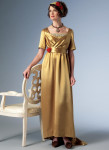
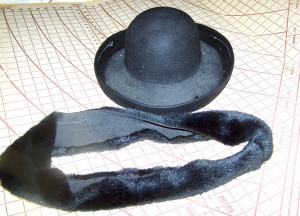
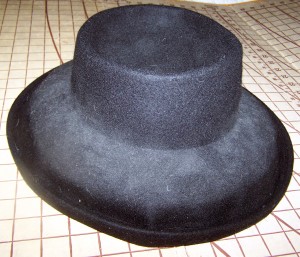
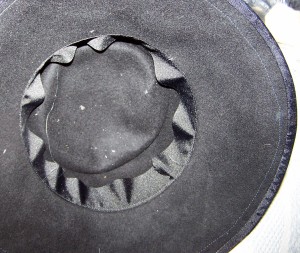
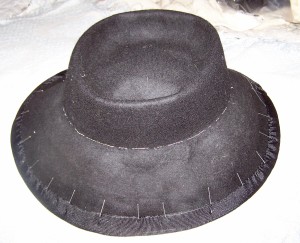
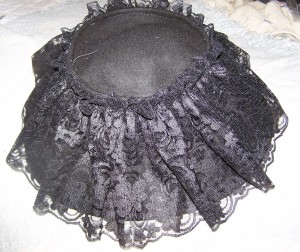
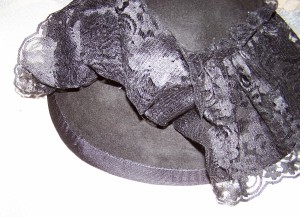
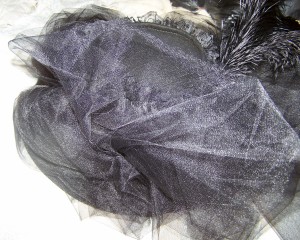
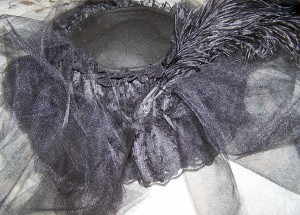
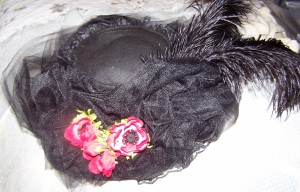
Recent Comments